Conceptual Portrait:

- volumes documenting thousands of pages of dates
- it’s not really something that needs to be written down to know how the years change, but it shows the expanse of time
- records of times that had no records
- each year is given just as much importance – no one year is privileged because of historic events
- dedicated to “all those who have lived and died” – not a record of historical events but of people

- Handwritten in lines like it’s disciplinary
- repetition makes something memorable, but too much repetition can make it redundant
- uses this repetition as a statement on “boring art” – it’s not too exciting to look at, but thinking about this piece is very interesting
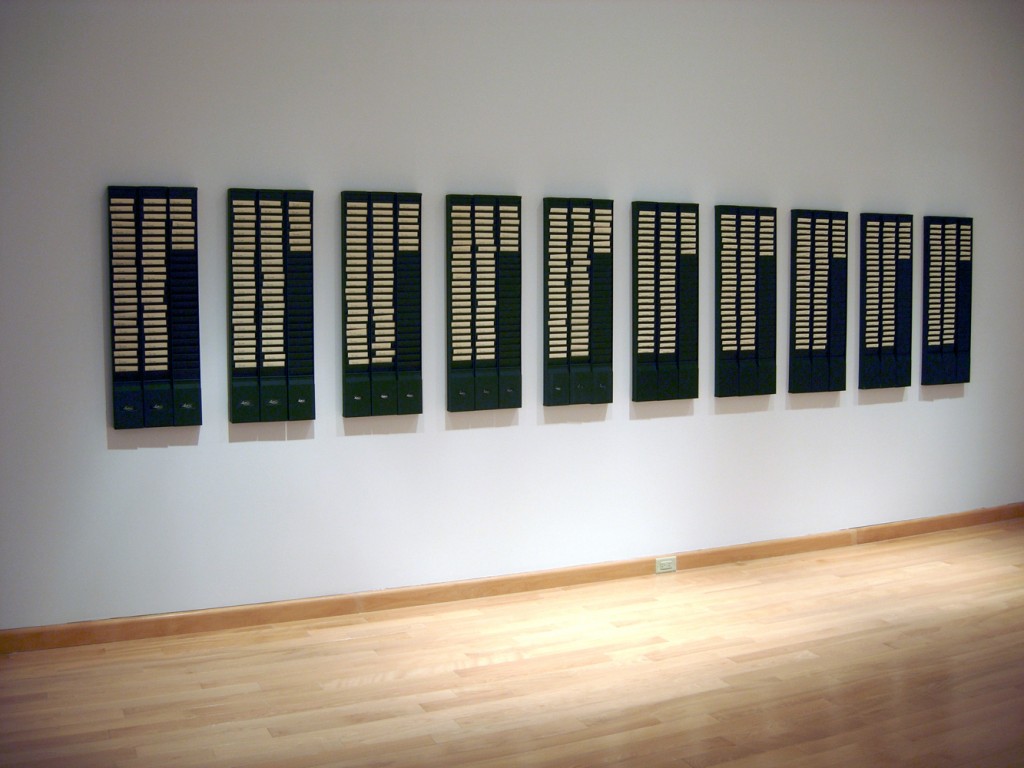
- keeping track of her working hours as an artist
- fights idea that being an artist isn’t a regular or secondary job
- it’s an artwork that is also a way of organizing her routine, time management and self-direction is important as an artist
- she has to remember every time she works that she needs to contribute to this piece, it’s a constant reminder and a project that’s always in the back of her mind

- 170 fossils carved into beads to show the range of geological time
- “charts the development of our species and affirms our intimate connection to the evolution of those alongside us”
- using physical pieces from important stages of the Earth
- controversy of using irreplaceable fossils for a work – but I think it’s relatively unobtrusive
- the piece only takes a tiny bead worth of material and I think it’s a much more interesting and even respectful way of displaying geological history
- I think this necklace is worth a lot more than an untouched fossil found by chance

- using human materials for art – photography of ashes
- balance of respect and ingenuity in art
- takes something dead, a memory, and gives it life again in her photos
- “When I began this process, I didn’t even think I could call it art. It was just something I urgently needed to do for myself.”
- gives a feeling of acceptance, moving on
- a collaborative piece between Hurlbut and the ashes
Conceptual Portrait Proposal:
For my portrait, I originally wanted to find ways of recording the changes in each day but I recently heard from my brother who won’t be able to come home for Christmas for the first time, so I wanted to make a piece about him instead. I was very inspired by Hurlbut’s use of human material and by Paterson’s scientific documentation of geological time in her piece, so I thought I’d use the accumulated dust in his room to show his absence as well as the traces of him that remain.
Here are some of the things that are sitting in my brother’s room that he won’t be able to tidy up this year:












My Brother Can’t Come Home this Year
Dust is made mostly from bits of dead skin cells and human materials, so like in Hurlbut’s work, it’s like there’s a part of him that’s still made it home. I’ve always been very close with my brother and because we moved a lot as kids, we were both a constant in the other’s life, so not being able to see him for so long has been hard.
It got me thinking that at least there’s always social media and technology we can use to connect, but he’s not big on social media, so I’ve compiled people I’ve found on social media with the same name as my brother, similar to the Davids work. Here’s my brother Aidan Flynn:



































Audio Art Piece:
Marla Hlady – Basement Base (Justina M. Barnicke Gallery)
- rotating floor as base speaker – interactive, you can stand on it
- playing recording of various things in the basement but just the base end
- mundane background noise made the focus
- I want to feel calm listening to this but I can’t help but feel a nit anxious – it sounds very ominous
- makes me think of a horror movie premise where the basement is always darker and scarier than it should be, all the noises that should be ordinary are enhanced
- the more I listen, the more I try to pick out the individual sounds of the fans, vents, and other noises (I can’t though)
Anna Ripmeester – Pipes in “C”
- noisy pipe used to improvise a musical composition in C
- taking something obtrusive and distracting and using it to make a work
- I especially like this piece for how she took a noise that may be annoying to others and did something productive and creative with it
- I have a hard time with background noise sometimes, especially if it’s a monotone and repetitive note
- there’s a feeling of resolution to this piece – she found a solution to what might have been a problem
- inspires me to find creative solutions to overstimulation – ignoring it isn’t the best so I might be able to transform that feeling through my own work
Laurel Woodcock – One Minute Apology
- remixing a song to repeat the same message for a minute – audible record scratch sounds as the record is moved to the right spot
- like when you have a single line from a song stuck in your head and you don’t know the other words
- I have the habit sometimes of apologizing for minor things too much but at a certain point it’s incessant
- listening to this piece makes me want to break that habit – it’s important to know how to apologize for wrongdoings, but in the right way, can’t always carry guilt around, good to learn and grow from mistakes after apologizing
- this artist might have that same habit, apologizing for everything is something that can be taught by social expectations and depictions of “ideal behaviour” (especially for women)
Proposal – How to Focus
I have a lot of trouble with losing focus and getting overwhelmed by ambient noise when I’m trying to work, so I either need complete silence or some instrumental music playing. There’s a very specific area in my house that is a good spot to work, but I can’t usually stay there for long because of the subtle noises around me.
I was very inspired by Marla Hlady and Laurel Woodcock using ambient noise to make the works I mention above, so I want to make a piece that captures the ambient noise in that room and enhances it so that I can convey how it gets to be overwhelming for me. I also like how Christian Marclay uses instruments, records, and other objects in ways that they weren’t intended to make his pieces. I would like to play with the “unwanted sounds” in my work like he has in his.
Some of the noises may include:
- the buzzing of the electronics in the room – home phone (the loudest), outlets, tv
- the fridge – humming and the ice maker
- the laundry directly a floor below
- family talking a couple rooms over
- the dishwasher
- people walking by/kids playing outside
- my own breathing and heartbeat
My Assignment:
Please listen with headphones on!!
For this piece, I recorded various sounds in the common area of my house and layered them so that they would continue to build up and get louder. I used ambient noise that can be very distracting for me but that may seem mundane and manageable to others if not for the building up of noise. In order to make this piece more immersive, I changed which ear certain noises were played in to simulate which part of the room they’re coming from. By introducing each element one at a time, I was hoping to make a symphony of ambient noise – an interesting, almost musical piece, stemming from a bunch of distractions.

Changing Face:
Turn and Face the Strange: Darcey Steinke on Our New Life with Masks
- faces interact with other faces – reading a face, blocked by a mask
- difficulty understanding with the masks – like a dialogue
- faces as reflections of the self
- silent films – example of the importance of communicating with faces instead of talking
- co-operation starts with conveying feelings/expressions
- the face makes meaning – Levinas
- prosopagnosia – face blindness, inability to recognize faces
- can use other tells and habits to identify people
- faces as a way of affirming our humanity
- “A mask is a kind of permanent pose.” – disrupts the vulnerability
- long history of masks – functional, ceremonial, and ritual
- “Interfacing with the unknown”
- battling with identity – the self seems less tangible
- “The fantasy of coherence replaces clarity with ambiguity” Efrat Tseelon
- “turns the face into a mask” – partial coverage means full privacy
- a person’s history seen on their face
- Expectations for women – wearing a particular mask (standards)
- feeling invisible – less interesting, like wearing a mask
- the aging face doesn’t receive the same empathy – the non-face
- discrimination and not seeing faces – blackface
- “What they do see when they look at you is what they have invested you with” – James Baldwin
- Pareidolia – seeing faces everywhere
- veils hide entire ways of being – liminal space between worlds
- disconnection like in a dream
In the article Steinke says: When I look at masked people my brain still feels like its malfunctioning, a skipping sensation, a tenuous connection is reached for and missed.” Describe a situation from your recent experience where not seeing faces has caused significant misunderstanding, confusion, or grief.
There haven’t been a lot of significant experiences that had to do with not seeing faces for me, I have noticed that it’s harder to understand people and hear what they’re saying without being able to lipread or look at their expression though. One thing that I have noticed is that the people I’m closest too seem less familiar with their masks on. I know nothing has really changed, but it’s like there isn’t as much intimacy in our communication – I can’t read their expressions and conversation can seem stilted or more formal than familiar like that. It’s like how Steinke’s dialogue with her husband have changed.
Which of the faces discussed in the text were of particular interest to you and your experience? How do you think about these faces?
I felt particularly empathetic to when Steinke talked about her whole history being seen on her face and how expectations for aging and for looks for women are so high and so much different than for men. I’ve always been very self conscious about my skin and my face because there’s this expectation that women should have perfect, clear skin, which is only heightened by the huge makeup industry. I have marks and acne and old scars on my face that, realistically, are more noticeable to me than to anyone else, but it’s still there if you look and it still tells a story about my face’s history.
Who are you without your face? How is your experience different without your face in public? Can you imagine new ways to face the world?
At first, I liked the feeling of anonymity that came with wearing a mask. I had less of a chance of being recognized, I blended in more with others, and I could mouth along to my music under my mask without others noticing. But now, I found that I’m starting to worry more about what my mask says about me and if I’m wearing a mask that looks nice or that suits me. It’s like my mask has become my second face since it’s just a part of life now and you can tell a lot about someone by their style, even if it’s just their mask.
My Face Assignment:
I’ve found that, with all the pictures and social media and reflections of our own face around us, it’s very easy to get caught up in appearances and spiral into self criticism. Lately, I’ve been making an effort to be kinder to myself about appearance, but some days, looking in the mirror can be particularly challenging. So I figured if I overexpose myself to my own face at different angles, I would either come to accept my appearance, or I would simply stop seeing it in terms of good or bad, but instead, as a grouping of shapes and facets of myself.

In this picture, I wanted to do something that always comes to mind when I think about my face, which is my skin. I used to pick at my skin a lot, especially through puberty when my acne was at it’s worst. It’s cleared up a lot since then, but I still have marks and a couple scars from then, but I wanted to show what it felt like when it would get particularly bad or when I’d pick too much.
For my last picture, I wanted to touch on more abstract concepts of the face, in this case, the sense of self. For these pictures, I took them through a prescription pill bottle, which is why they’re tinted orange and my face is distorted. I wanted these pictures to represent my uncertainty and fear about my sense of self and how, when I take medication, I’m different than when I’m off my meds. It’s majorly a good difference, but it makes my relationship with my sense of self feel skewed, because I’m not sure if I’m more authentic with or without medication. So, the result is a distorted and uncertain self image, like in these pictures.
Adad Hannah:
- “tableau vivant” and photography
- recreating early photography by looking at the “moment of the pose”
- uses performers to tell stories through stills
- viewer mirrors the subject of the videos – both stand still and think of the moment of the pose
- often inspired by preexisting works or texts
- His videos remind me of Cindy Sherman’s film stills

2018, archival pigment print
61 x 40.5cm / 24 x 16 in). Edition of 2
- “through videos […] stillness is used to highlight the subtleties of motion” – Handheld Case Study (White, Orange, Blue) Equinox Gallery
- limiting colours, forms, and movement force the viewer to notice the smallest distinguishing features (texture, slight shifts, etc.)
- The Burghers of Vancouver – “theatricalized but devoid of drama” miscellaneous group of performers brought together to pose as a living sculpture
- immobility and anonymity for the powerless dealing with unemployment and marginalization

2013, archival pigment print
84 x 121 cm / 33 x 47.5 in. Edition of 2
- The Screen – crowd scene where their clothes are cut out in the shape of a rectangle
- made by projecting a rectangle of white light into the group, they become the screen that is being projected on
- the projection isn’t in the final piece, just the cut out shape
- Traces – “dialogue between photography, video, and performance”
- tableaux vivants arranged in Toronto’s Nuit Blanche
- photos of details and videos of poses

2009, colour photograph
101 x 76 cm / 40 x 30 in. Edition of 7
- All Is Vanity (Mirrorless Version) – identical twins performing tableau
- “illusion within an illusion”
- inspired by drawing by Charles Gilbert – optical illusion of a skull crated by the arrangement of objects in the piece
- connects more with viewer than the original static drawing, clearer sense of time passing in his video
- Museum Vivants – appropriates the museum setting, “museum vivants”
- “the act of aesthetic apprehension” imitating the art or reacting to/interacting with the space around them
- two extremes of engaging with art in a museum – disinterest or banal engagement (traditional standard) vs. engaged and exaggerated
- aspiration and excessive interest vs. quotidian vs. banal/disengaged
- they become the art, like living breathing sculpture
Social Distancing Portraits:
- COVID-19 daily experience – stars from frustration
- captures strangers living life during the pandemic, tableau vivant style
- diverse subjects because they’re whichever stranger agrees to have their portrait taken
- Subject in focus, blurry background for emotional intimacy
- each video has music
- subtle movements reflect life during the pandemic – distance and isolation are restricting our ability to move
- “strange, tense in-between moment”
- includes peoples comments about how they feel living in a pandemic
- Titles with “Social Distancing Video Portrait [#] (_______ edition)” — NAME — “quote” —
- title is based on the quote given
- you can see when he takes multiple videos of different people in one spot
- lots of everyday adjustments mixed in with many pictures from the BLM protests
- shows the differences between each persons experiences during this singular shared event that connects us
My Assignment:
For my piece, I wanted to show how someone with different circumstances than me may be dealing with COVID-19 in other ways than I am. I chose to take a portrait of my grandma, who unlike me, doesn’t have classes to attend and doesn’t use the internet other than for emails, so she passes time in her own way. Since she can’t meet up with the other people in her building now, she goes out every day, sometimes two or three times, for a walk in the park. I asked her how the pandemic has affected her life and you can read her response bellow.
Social Distancing Video Portrait (the park is so peaceful edition)
—
Ann
—
“Well, I certainly miss being able to go to the store and go enjoying Guelph because it’s a very interesting city, but I’m very grateful that I live here so I can come through this park. Two, three times a day, as often as I want because there’s always someone that I know, there’s always something to see, a little different. Some days the geese – the wild geese – are around, some days they’re not, like today, and nature – and it’s so peaceful. There’s no traffic to hear. It’s the water and the leaves. It makes me feel peaceful.”
—
Instructional Sentences:
Lee Walton – Video one: Change the order of the street by moving one item. Video two: Quietly sit down next to a stranger close enough to touch on a bench.
Jon Sasaki – Video one: Climb a ladder without leaning it against anything. Video two: Turn a van around in a narrow alleyway.
Lenka Clayton – Let your child walk ahead of you for as far as you’re comfortable with.
Yuula Benivolski – Explore the sensations of touch and sound of an object.
Defenestrate objects. Photo them in mid-air:
For this assignment, I was really inspired by the use of the expression “getting a feel for things” in Lee Walton’s work, so I wanted to try my hand at my own artistic pun. I couldn’t figure out how to take the screens off my windows and get them back on after, so I threw my objects off of my neighbour’s balcony. So, here is me “throwing a party“:
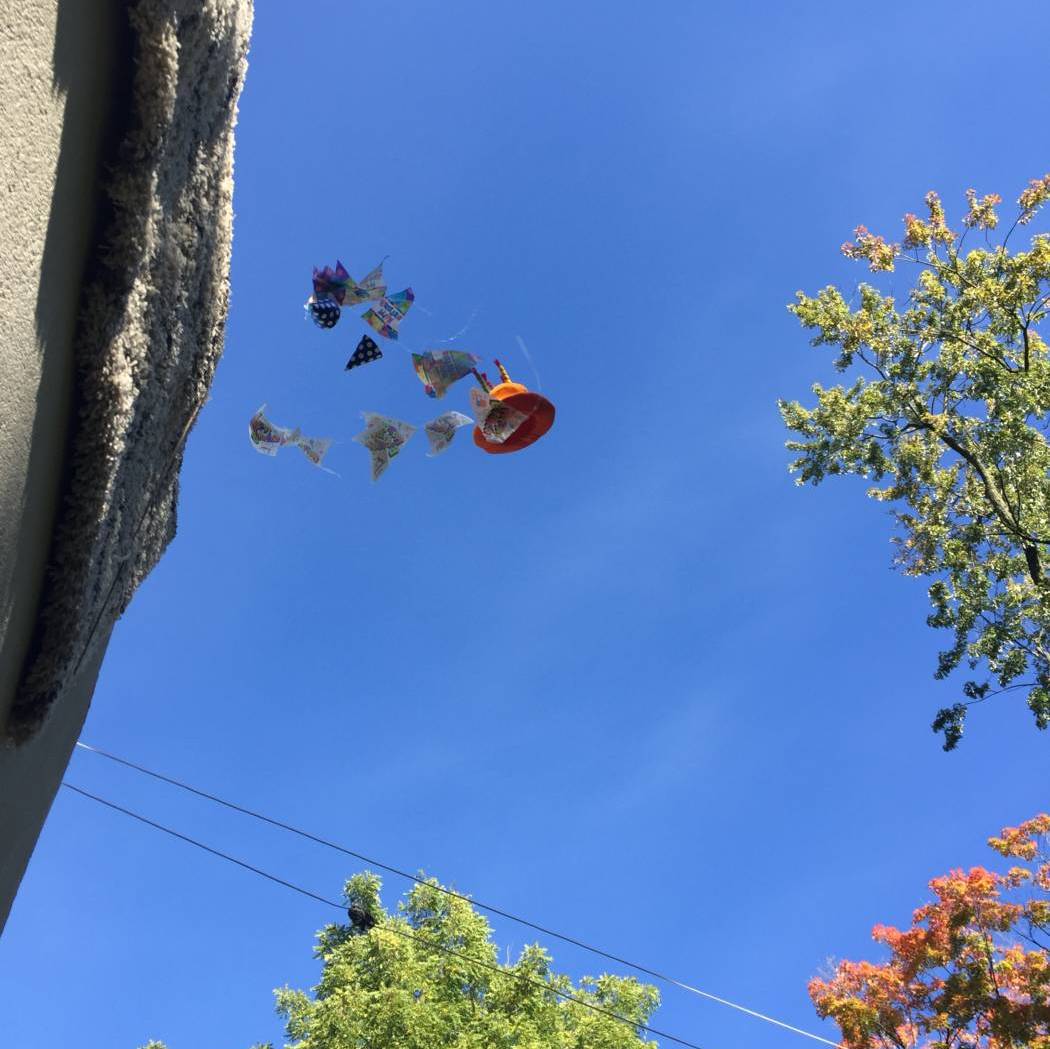
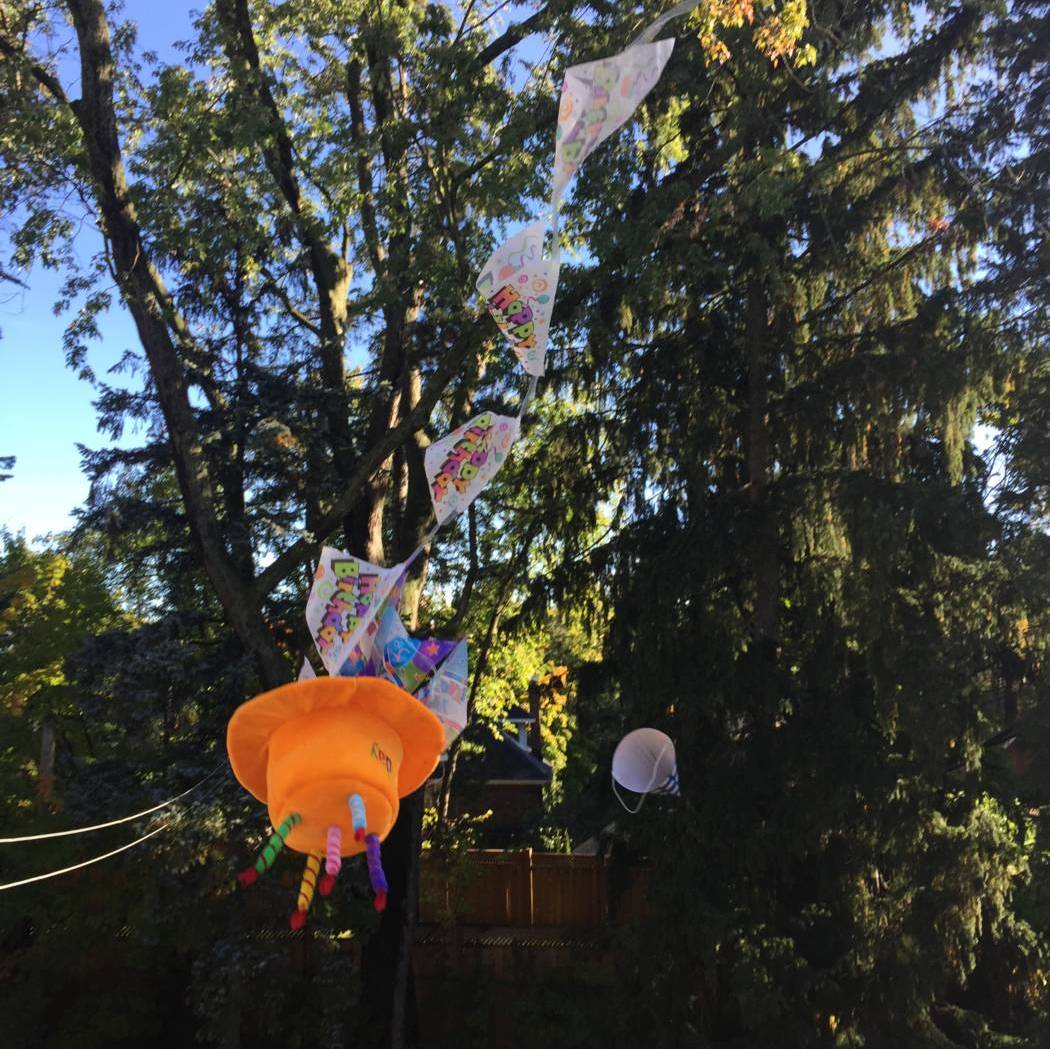
Be Still:
For my assignment this week, I was very worried that I wouldn’t be able to stay still for an hour since I’m prone to fidgeting subconsciously. So to best account for that, I decided to pick a comfortable position and find a way to fill the silence so that my brain would have something to hold on to during the hour. For the duration of this assignment, I read from a book in my hands and sat lounged back in a comfortable spot, like I would when I normally read. Only, I couldn’t turn the page since I needed to stay still, so out loud, I read the same page over and over again for the whole hour.
I was inspired by a couple things, firstly, by a book called The Reader on the 6.27 by Jean-Paul Didierlaurent, in which the main character saves pages from old books about to be destroyed to read on the train. I was also interested in how Abramović would repeat the title of her work, Art Must Be Beautiful, Artist Must Be Beautiful, like a mantra during her performance. Personally, I have a hard time reading, as much as I love it, since my experience with mental health makes it difficult to focus on what I’m reading. This makes it so that I don’t take in the words and more often than not, I have to reread whole sections or pages of a text to register it. So, for a lot of this piece, I was finally able to fully digest what I was reading. The work isn’t really about the book itself, but about the rhythm of my reading and my breathing that repeated throughout the hour. In case you’re curious though, it’s Howl’s Moving Castle by Diana Wynne Jones.
I didn’t move much during this work, but after, I could feel the tension and ache in my hands from how tightly I was holding the pages of the book. What I did notice though, was how strained my voice became and how sore it made my throat. About halfway through the hour, I had started a steady rhythm since I knew the words well, so I knew what tempo to keep and when to pause for a breath and how quickly I could jump back to the top of the page so that I read non-stop. It was going smoothly and I was completely focused on the beat of my voice and the sound of the consonants each time I would close my lips, but then it started to get harder and harder to read at the same pace since I would need to pause to give my throat a break or to swallow, hoping that would sooth it, and the less focused on the rhythm I became, the more mistakes I would make while reading. I’ve included a couple videos of how my voice started to die on me.
Just out of curiosity, I tried to write down what I could remember of the page after the hour. I couldn’t get it word for word but I got the meaning and the order right at least, but after a while, the words lost their meaning and just became sounds and beats.
Marina Abramović:
- performance art – putting herself in danger, physical harm and exhaustion was common in her work
- ex Rhythm 10 – stabbing between her fingers over and over again
- Art Must Be Beautiful, Artist Must Be Beautiful – repeating phrase over and over while she brushes and combs her hair aggressively/frantically in different directions
- drag along face and up back of head, all directions and intensity
- not always true but there’s expectations for art to be beautiful like how there are expectations specifically for female artists to also be beautiful
- there’s a fine line female artists are expected to tread where they can’t put too much effort into their appearance or their work will be devalued and they can’t put too little effort or else they won’t fit the conventional beauty standards of “natural beauty” – it’s never just natural
- Relation in Time – sitting back to back, tied by hair, silence, for 16 hours
- once again pushing limits of the body, 17th hour with audience
- more energized – posture, focus, stillness
- Breathing In/Breathing Out
- Rest Energy – this is my favourite work so far, I know that no one was hurt and that Abramović is alive today but just looking at the image terrifies me and thinking about how one slip up could have ended disastrously makes me want to both look away and keep staring
- it’s an exercise in trust maybe, but I don’t think I’d be able to recreate it
Marina Abramović: The Artist is Present:
- “It takes such a long time to take you seriously” – she’s finally getting recognition
- still, people are questioning her and her art
- three versions of herself, her favourite being the one with “spiritual wisdom, who can go above all that”
- she was asked more why her art was considered art when she was younger, always seen as alternative
- “shared experience of the audience and the artist”
- a lot of her works are interventions – interaction with the audience, see what they’ll do once they have permission
- 30 young artists to reperform her 5 MoMA pieces
- “performance is all about state of mind” – Abramović
- performance done every day for 3 months – nothing else but your own presence
- mix between spirituality and discipline from her childhood
- her manifest – thing’s an artist shouldn’t do and should avoid
- volatile relationship but now forgive each other – very separated based on gender roles (conventional tasks for men and women in a relationship) – symbiotic
- her work has no illusions, harsh truth in each performance piece
- “inactive, silence, fasting” 3 things people discredit
- The Lovers – walk along the great wall, end to their relationship
- newer works – more theatrical, formalist
- “when you perform, you have a knife and your blood. When you’re acting, its ketchup and you don’t cut yourself”
- no life partner for the piece, the audience becomes her lover
- clean the slate for each audience member, reconnect with each person
- becomes about the audience member instead of the artist, transformative
- won’t even consider ending the performance early even if she’s in pain
- she says that pain puts you in another state of mind and the public starts to feel that – how to bring them in the same state of mind
- moving table removes obstacles and makes it more direct
- people lining up tp participate, camping out overnight
- she’s in love with the world, not each individual person but she loves the connection with the audience
- self portrait
Make a Kilometre:
For my kilometre, I wanted to do something about how distance is affecting how I stay in touch with people, since the best way for me to catch up with others is in person. Since I can’t do that right now, finding other ways to stay in touch has helped but it’s still tricky! I often find it overwhelming trying to keep up to date with everything and everyone and I feel unraveled at times, so this was my way of working through that feeling.
My idea: using a kilometre of yarn –> make a really long paper cup phone
- average ball of yarn was 50g or 100m of yarn
- 10 balls of yarn tied together = 1000m = 1km




Here’s me unraveling and tying together 1 kilometre worth of yarn, and this is my final product:

Seeing my final draft, I realized it was much too complicated and decorated, so I’ve decided to post a couple pictures of just my pile of yarn as well so you can get a clear look at how much a kilometre of yarn is.
Sol LeWitt:
“How does Sol Lewitt express the notion that “the idea is the machine that makes the art” in his work? What does the artist’s actual hand have to do with the final work in a conceptual art context?”
- written instructions + diagram = the work of art
- compared to music, other artists recreate the piece
- “no creative input” from artists creating mural, where they “take over”
- “successful cooperation” group art
- like a construction site, they don’t design but they build
- sense of connection between group artists
- “ultimate pragmatist” LeWitt
- artists “leap to conclusions that logic cannot reach”
Sol LeWitt expresses this notion through using what could be described as an assembly line to create the finished piece. His work makes me think of an architect, who designs a building and chooses what materials it’s made of, but then sends the designs to a construction team to build it. You wouldn’t say that the construction team came up with the idea of the building, just like how the artists that painted the mural didn’t design it, but they still had a hand in its creation.
There’s a certain level of trust between LeWitt and these artists since he can’t guarantee that they’ll follow the instructions exactly how he envisioned them, but then that could lend itself to the idea of the machine. It may not always be reliable, but if the instructions are specific enough, then it will be more accurate. In this way, the artist’s hand becomes part of the machine since it is a tool being used to build the final product. However, it doesn’t seem to matter who’s hand is being used as long as it does exactly what it’s been set out to do (follow the instructions). I think that because of this, LeWitt’s work isn’t about the skill of the hand, but rather the collaboration of each part in this machine as a perfectly running assembly line.
Yoko Ono:
“Where do you draw the boundaries around the artworks in this video? What are the artworks? What strategies and tools does Ono use to challenge the viewer? Do you like any of these concept-works? Discuss.“
- artwork ideas with instructions, most called painting, not conventional painting
- painting to be stepped on
- laugh piece
- “painting’s for cowards”
- painting to see the skies
- sun piece – watch the sun until it becomes square
- fly piece, fly
- walking piece – step in someone else’s footsteps
- on ownership – declaring ownership of spot, includes painting/photography as a symbol of ownership, taking care of what you own, does this much care for the spot reinforce ownership or make ownership more disrespectful?
- earth pieces – connecting to earth, “good for your health” appreciation of the earth
- cleaning pieces – saddness vs happiness, clean out negativity?
- room piece 4 – not having to find meaning in everything, “unclog your mind”
- sound pieces – listen to breathing
I think that each of the pieces Ono lists can be artworks in their own right, but that the video as a whole is also a singular artwork. Each piece seems to have instructions that range from vague, to precise, to impossible, but all together, they can be seen as one set of instructions for a better life, or at least more of an appreciation for life. Ono is giving the opportunity for other’s to use these instructions to create their own artwork, which is different then how LeWitt has given instructions. LeWitt gives precise instructions based on his design and his vision, but Ono gives instructions that may create wildly different results each time they’re followed. Her work gives more freedom to other artists so that their hand in the piece is obvious.
At first, the works seemed like a challenge, both to the conventions of what is considered an artwork and to the viewer, as a demand to be followed. I then started to see the piece as an invitation to start appreciating and viewing life in a different way. This change in perspective started around the “Walking piece”, it reminded me of when I would step in people’s footprints in the snow as a kid. Ono was presenting something familiar to me as an artwork, which at first seemed too simple to be a work of art, but the more I think about it, the more I can see the intrinsic beauty in something that brought me joy as a child. Each of these works offer a new perspective on life and challenge how the world around me can be viewed, which, to me, is what all art is capable of.
I also like the “Sound pieces”, I think that breathing is one of the most beautiful sounds because it shows how unrelenting and constant someone’s life is in that moment. Each breath taken just adds on to all the ones before it and each breath after is something so reassuring and I keep anticipating it. It’s the most obvious sign of life and that makes me feel alive in return.
Bruce Nauman:
“Describe two works by Bruce Nauman (include images) where he frames every day actions (non-heroic, banal) as art. How are they “framed” as art, and what does the framing do to our understanding and experience of the actions?“
- art should be disturbing at first – as in confusing
- sound, lights, colour
- whatever he does is art since he’s an artist
- make art with whatever he has available, anything he does becomes art
- “operates with artist block” where he starts with a piece, hoping something will come
- ideas form when he manifests it, just like his art
- between sense and nonsense, always something more than we think we see
- humour in his art, not concerned about beauty, wants to show how the world is in a funny way
- musical structure to his work, rhythmic form
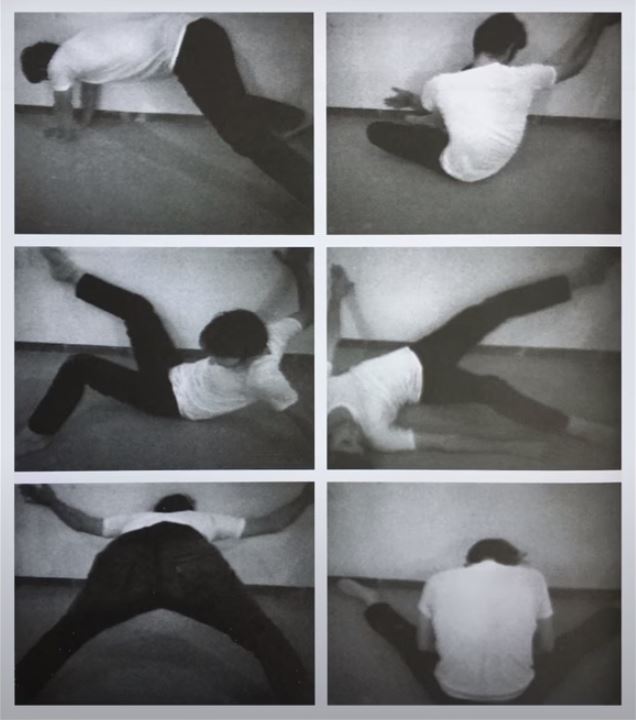
In the video, it’s said that Nauman creates sculpture using his own body and that he uses whatever is available to him. It doesn’t matter what he uses to make his art, or what little he uses, because according to him, whatever he makes as an artist becomes art automatically. I find that I like his approach to the creation of art, since meaning can come from any everyday occurrence. Gesture is one of the most universal ways of communication, it’s one of the first steps of learning other languages, and it’s one of the things that we don’t think much about. So, Neuman stating that everything he makes is art is able to bring a new importance to common gestures by exploring them further, repeating them, and documenting them. In this work, for example, Neuman uses his body language and the professional setting of the artist’s studio to frame his own gestures as the artwork.

Neuman takes a similar approach in this piece by using the body as a medium, but he takes one step closer to the sculptural comparison. It seems silly at first to have him spitting water towards the camera but when compared to his more recent work of the two, he takes a more direct approach to presenting the body as a sculpture in this one. He’s even posed with his hands up like he’s been turned to stone. It’s a way of forcing the viewer to accept this piece as art because of the clear link to a sculpture in a fountain, highlighted by the studio lighting to give the piece a more professional look. Although I like the silliness of this one, I think his later work does a better job of framing his gestures and his body as the work of art since there is no obvious comparison or reason to his poses, so they demand more from the viewer. This, I think, shows more confidence as an artist, since Neuman’s later piece gives me the impression that he’s more sure that whatever he’s making is art.
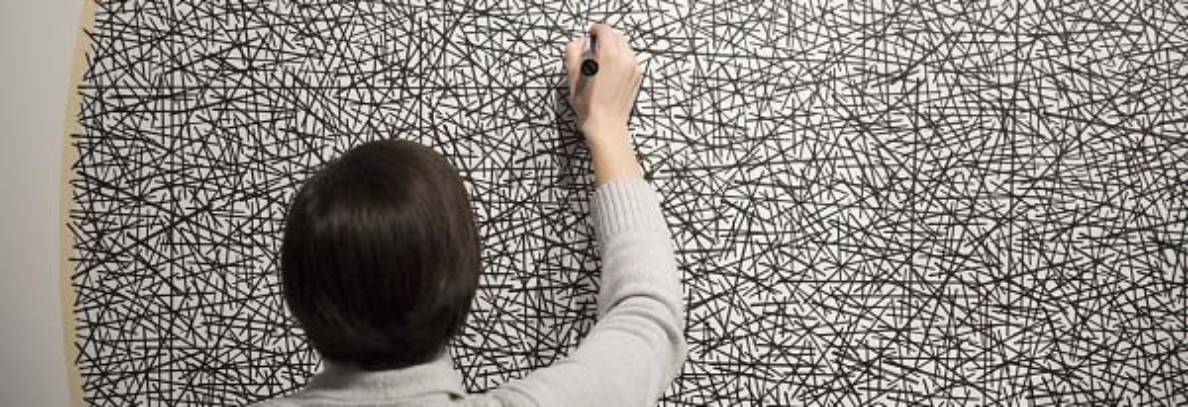
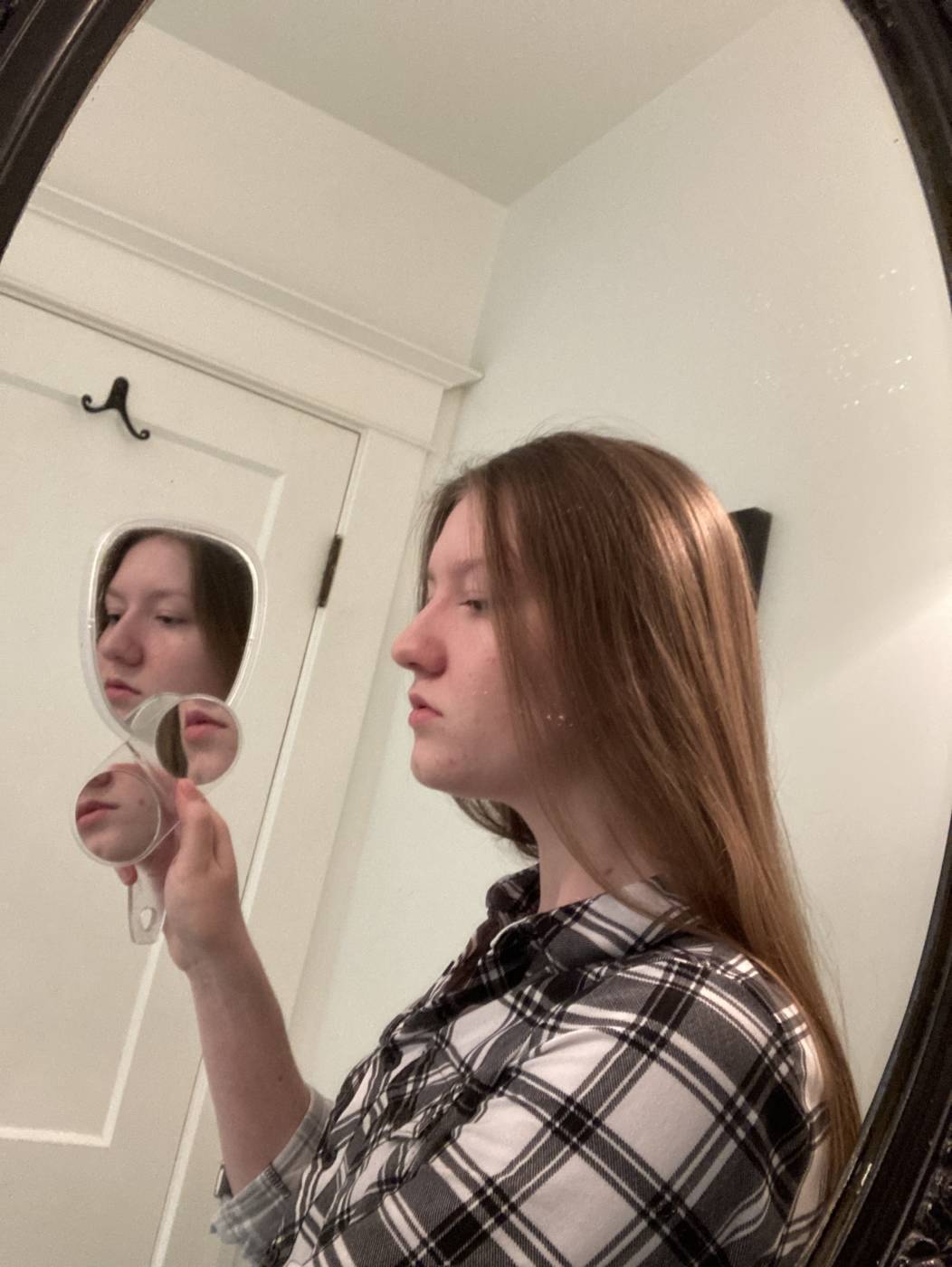
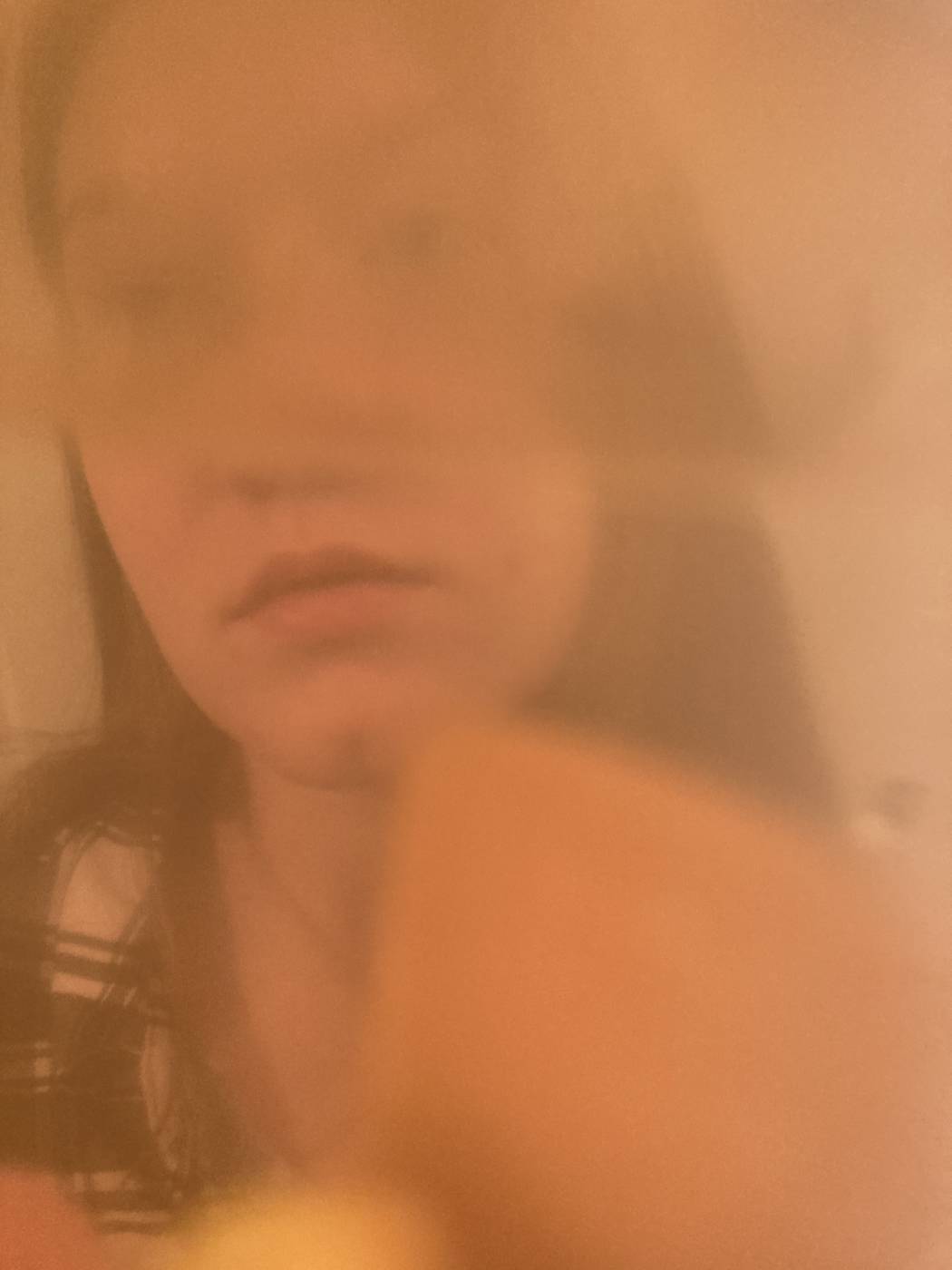


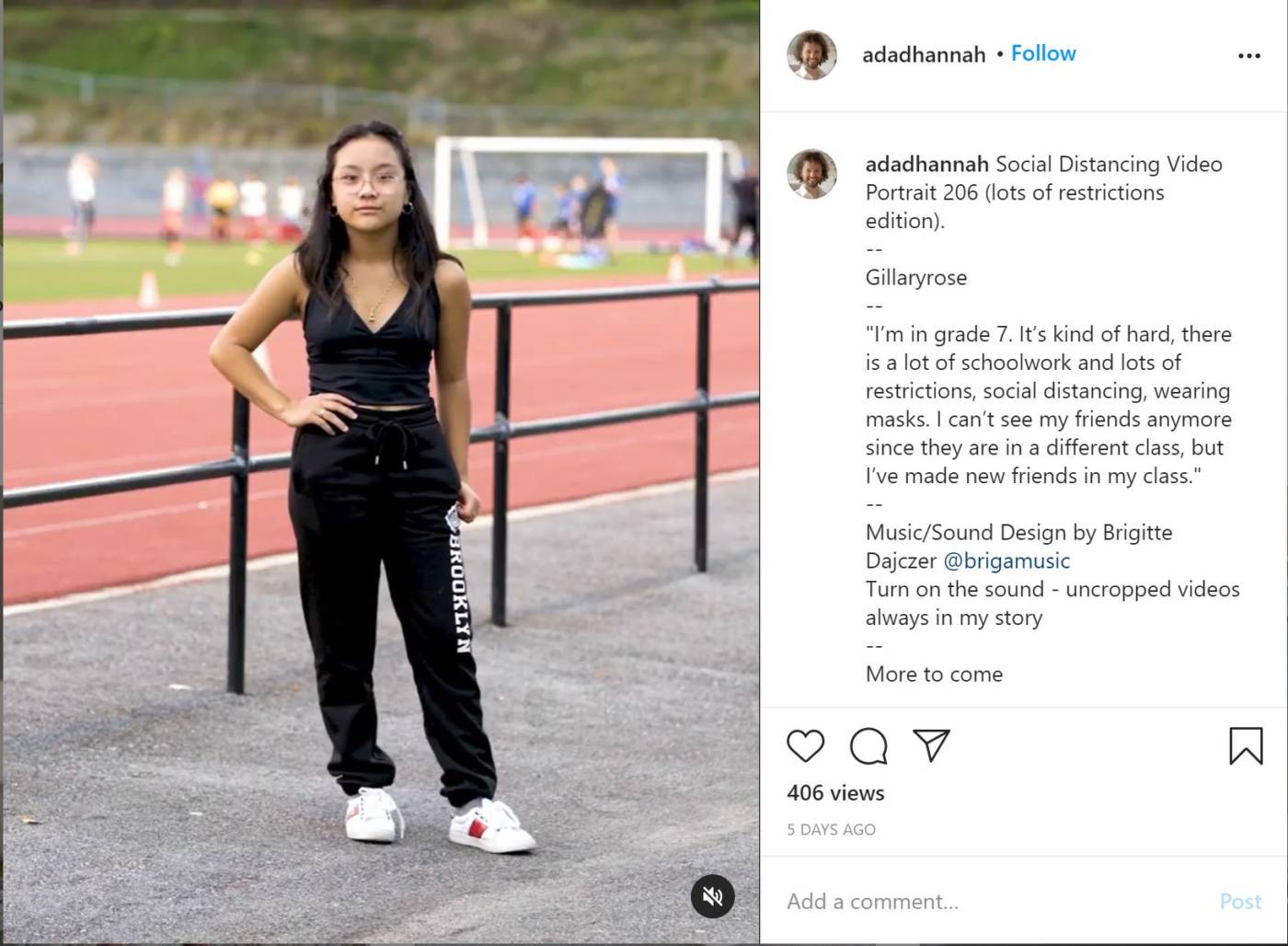
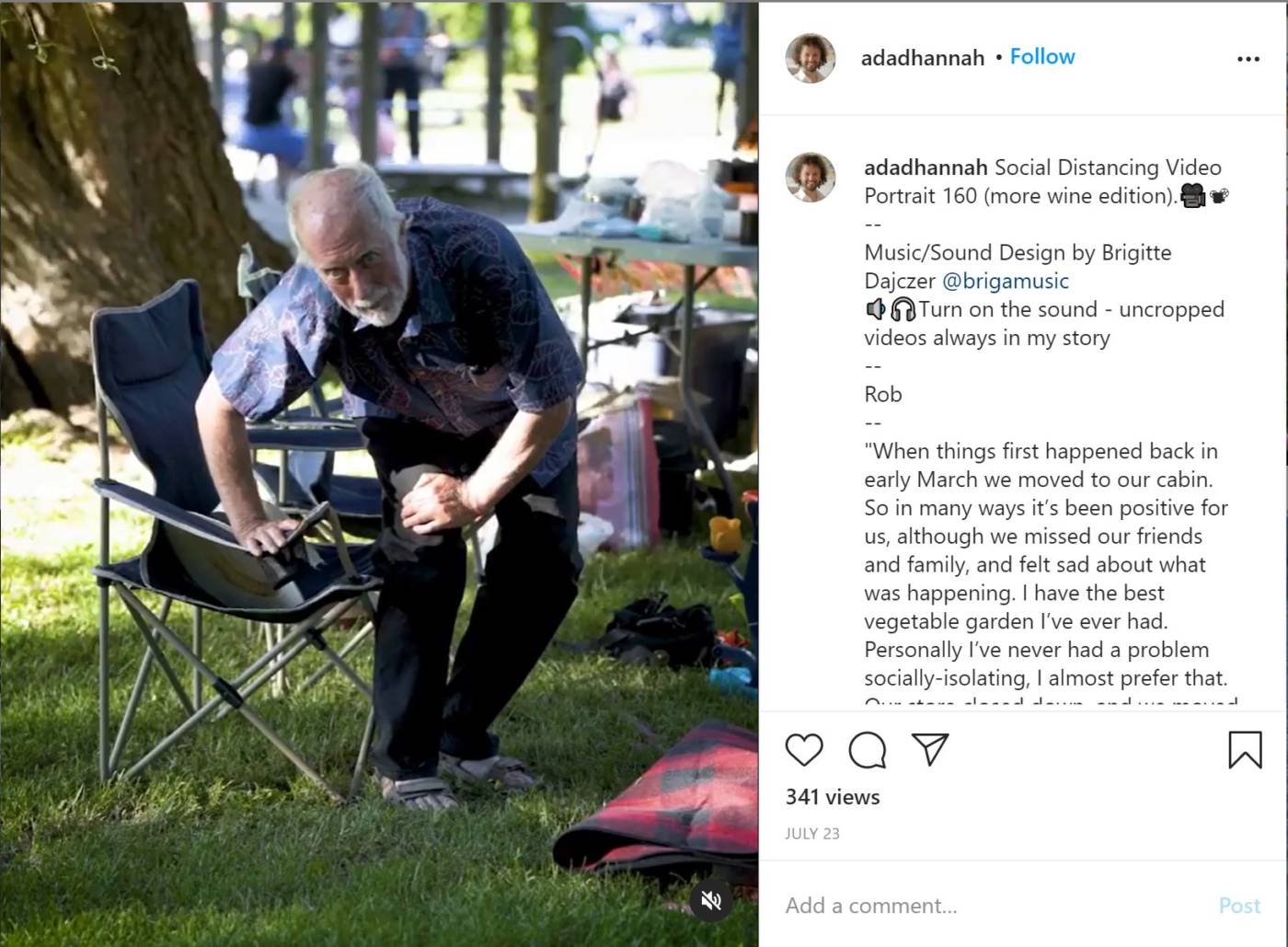
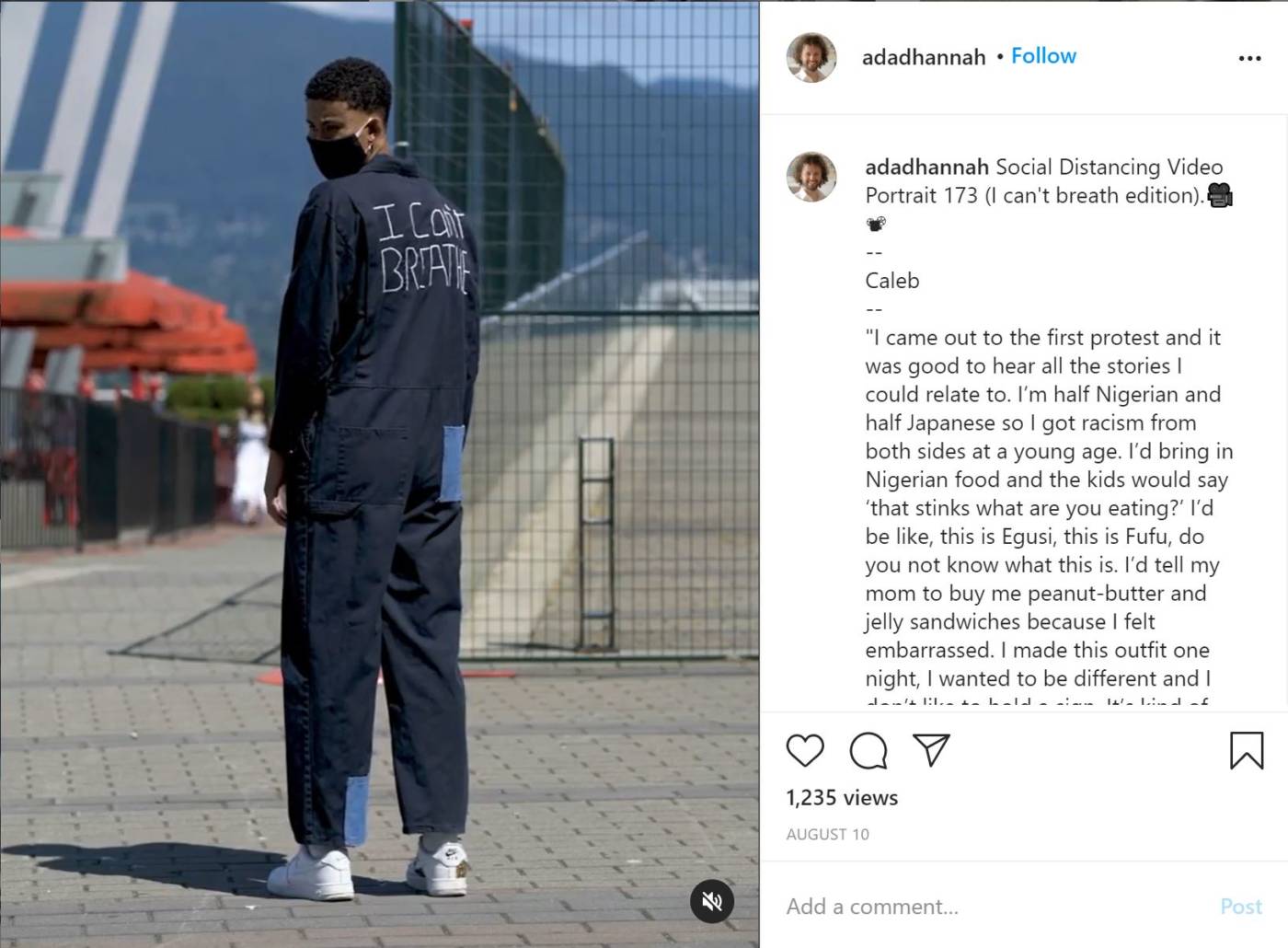
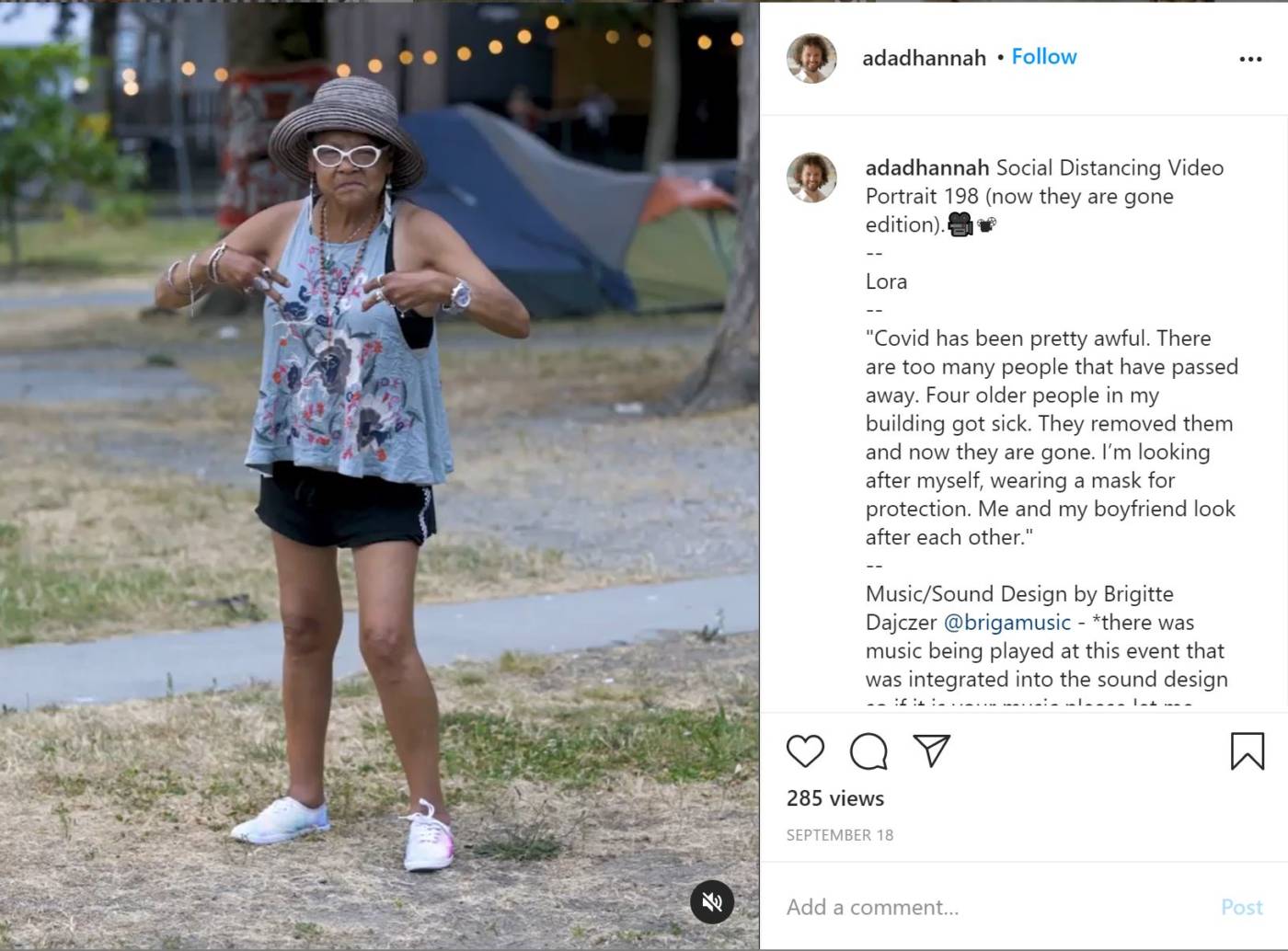
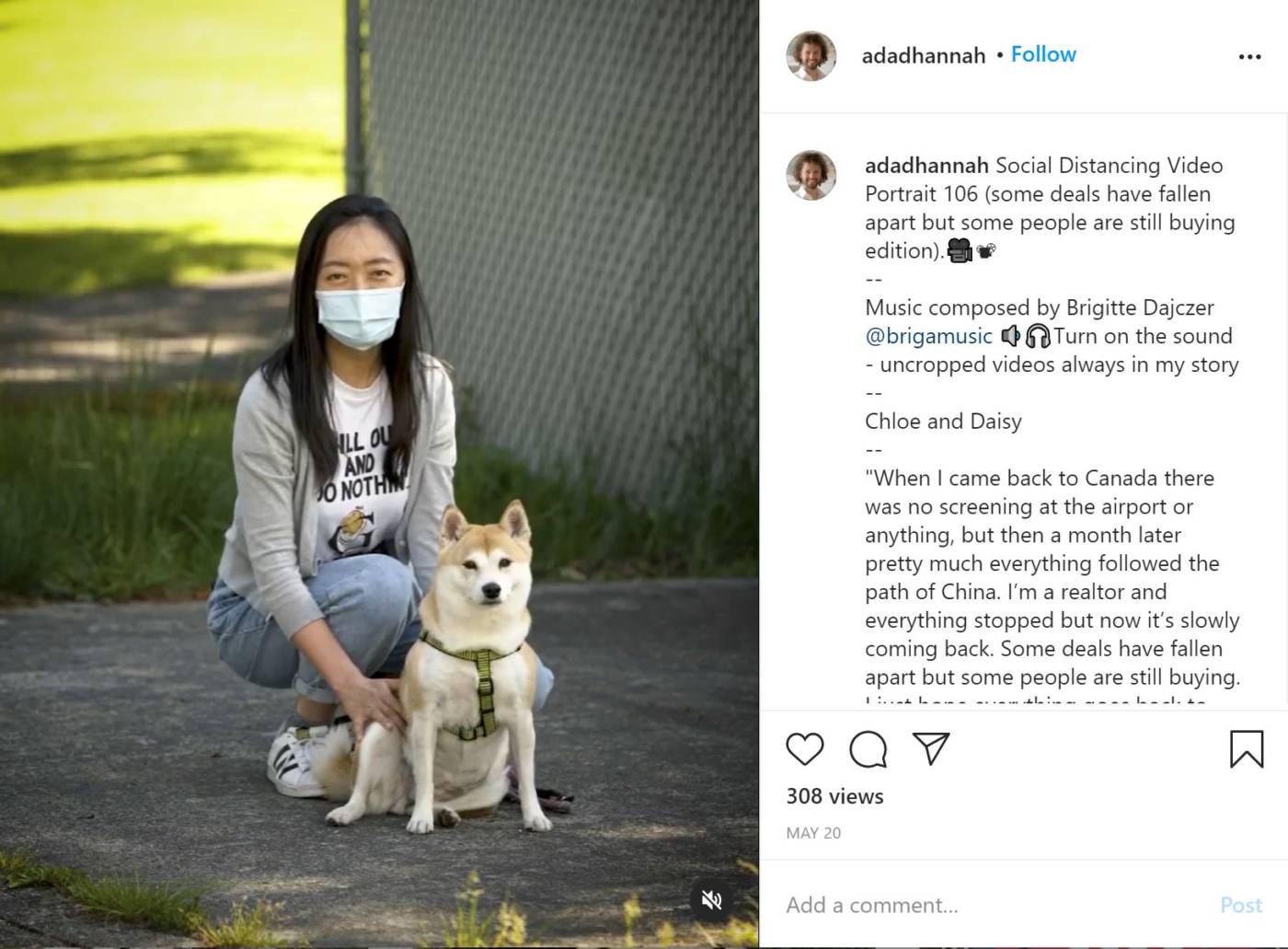







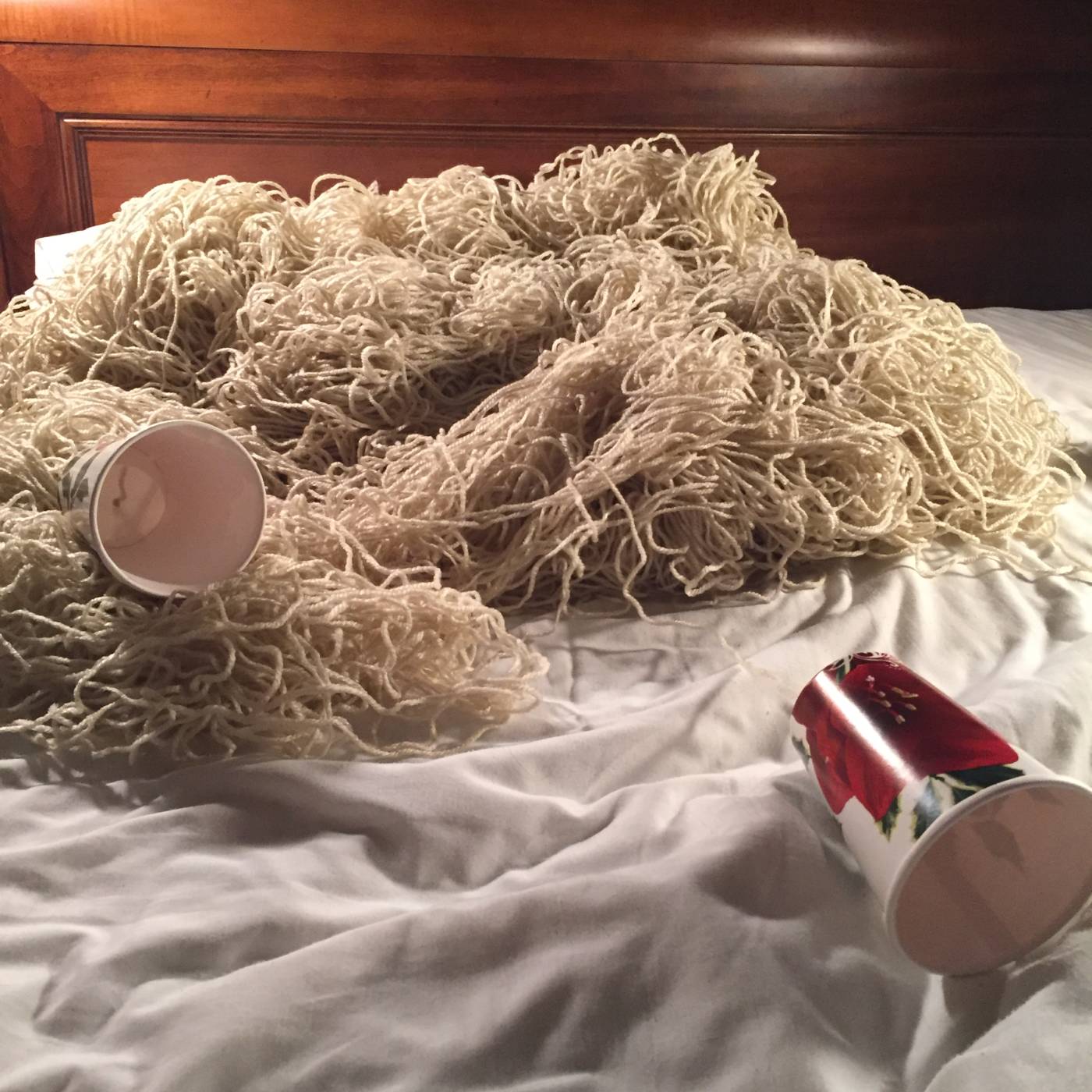
Anastatia:
W1:
Notes on Sol Lewitt, Yoko Ono, Nauman complete and evidence of curiosity and engagement with material.
Kilometre image and description – seems related to conceptual practice, I like how you measured the kilometre, a kilometer long line of yard – both interesting way to think of this work, and to feel and experience the volume/size of the unit: KM.
W2: Image of Abramovic/Stillness gesture, and description complete and a good idea, getting close to ideas at play from Abramovic, reading and still. I appreciate you made yourself uncomfortable/challenged to create tension, and meaning in the work. This could be a real time video, showing all the discomfort, moments of failure, struggle, but of course always be reasonable and safe with your body in your works. Excellent notes on the film and other work, showing real investment and engagement with the references.
W3: 6 conceptual sentences are complete and correct, with the simple formula for actions in each piece. Defenestration image and description complete and starts with a good idea, to throw a party out the window – which could go even farther into absurd territory, it makes me want to see what happens if you threw a real cake, or something that would make a mess, spill, explode…
W4: Excellent notes on Adad’s work, and close looking. Distancing video portrait, and description – complete and ambitious! I like how Ann conveys something real, or that looked real, what people are really doing in this moment/time, and you picked up on the themes of resilience in Adad’s work. Well framed, and described. Great effort on this exercise.
Very good attendance and engagement –keep up the excellent and thorough notes and critical thinking, and you are making better and better work – can’t wait to see what’s next!
If you would like to talk with me about your work in progress, readings, exercises, one-on-one comments on your work, and grades – send me an email in the morning to book a 15 minute appointment during my office hours: Thursdays 1:30-3
And you can show up to a zoom meeting with Nathan anytime during these hours to ask your questions, and get tech support for using software and finishing your projects:
Mondays and Thursdays 1-4pm